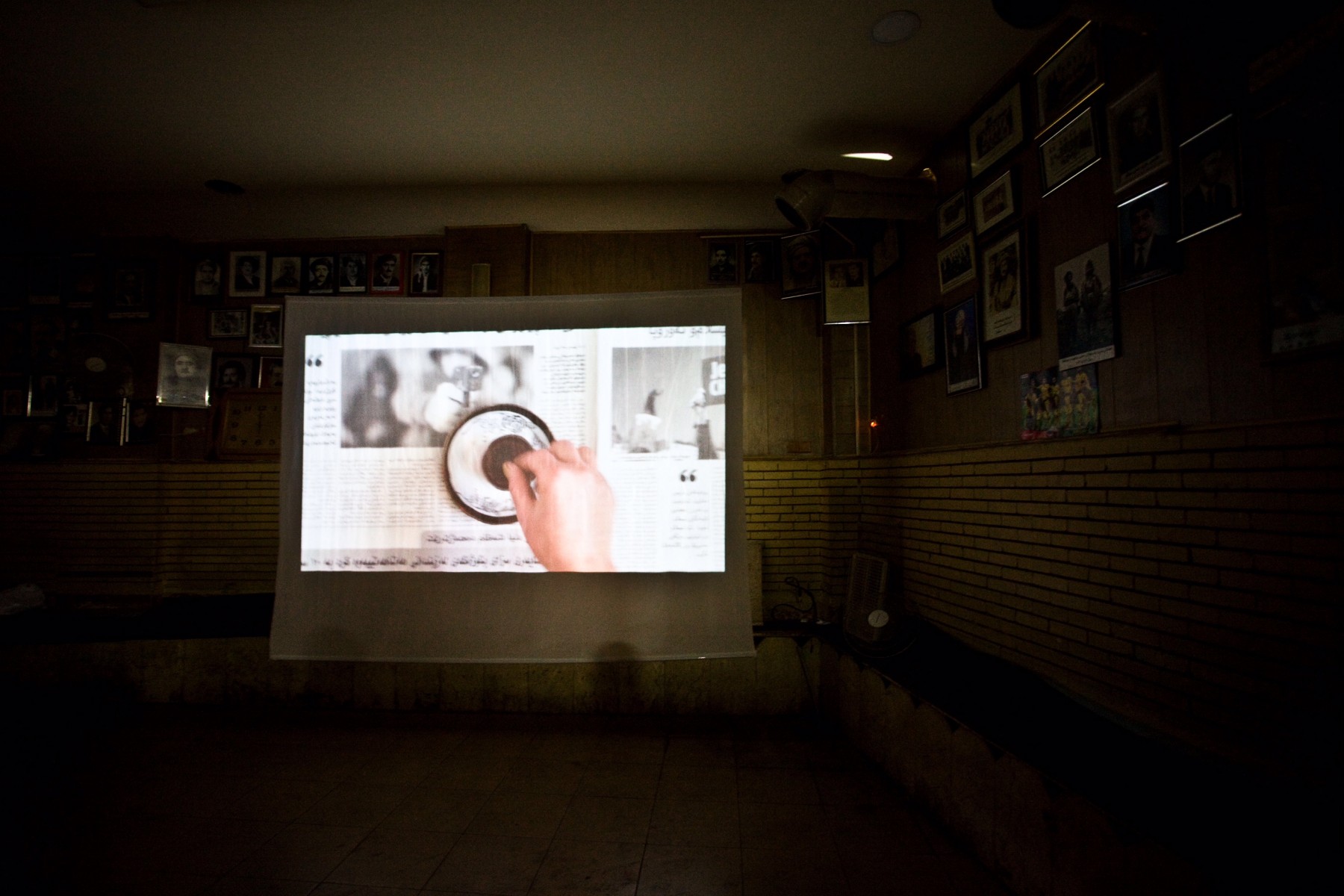Deprecated: Function get_magic_quotes_gpc() is deprecated in /srv/app/ruyatemp/htdocs/cms/wp-includes/formatting.php on line 2675
The Shaab Teaouse is a popular teahouse in the city of Sulaymaniya. Opened in the 1950s, its patrons include famous Kurdish poets such as Faek Bekas, his son Sherko Bekas and Akhol Shaeb. During the civil war in the 1990s, the teahouse served as the unofficial headquarters of the PUK. Hung in several rows along the walls of the teahouse, are portrait photographs of important leaders, intellectuals, poets and musicians in Kurdish history, as well as local football teams. There are almost no women among these photographs.
Responding to this, the Sulaymaniya-based contemporary artist Rozghar Mustafa screened two of her own video works at the Shaab Teahouse last month. Both works focus on women; womanhood and the violence against women in Iraq. Mustafa’s exhibition, which ran for a week during the opening hours of the teahouse, challenges what is typically a male-dominated space of Iraqi tea and coffee houses. The Shaab Teahouse introduced the first two portraits of Kurdish women poets as late as September 2016.


Mustafa’s exhibition can be seen as part of the wider growth of a contemporary art scene in Sulaymaniya. A week earlier, at the Institute of Fine Art’s exhibition hall, the artist Sherko Abbas curated the group show ‘Clamour’, which featured the work of eight artists from Sulaymaniya. The title of the exhibition ‘Clamour’ was selected by Abbas to highlight what he perceives as the complexity of the contemporary situation in Iraq. “Everyday we are awakened by clamour, but it is impossible to know what is really happening on the ground. This clamour is the result of words losing their power”.

Shirwan Fatih’s installation The Dust of Learning is part of the group ‘Clamour’ at the Institute of Fine Arts, Sulaymaniya.
The eight exhibiting artists, which include Abbas himself, have made sound and noise a central part of their work. For the filmed performance ‘Her Voice’, the artist Kani Kaml plays her own hair like the strings of an instrument. In doing so she references a tradition of women artists who have used hair and body parts in their work as a way of reclaiming the female body. Meanwhile, the artist Shirwan Fatih presented his installation ‘The Dust of Learning’. On a green chalkboard, Fatih hung fragments of school bells, then wrote a timetable in white chalk beneath them. The piece draws on the artist’s interest in educational and learning systems for children, which condition social norms and modes of behaviour. In this piece, he explores contemporary rituals associated to time and timekeeping, and their relationship to existing power structures.
The city of Sulaymaniya is well known for its cultural activity within the Kurdistan Region of Iraq. While there are several arts institutions and galleries in the city, contemporary art practices have yet to be embraced by the wider artistic community and audiences. The arts education at the Institute of Fine Arts remains traditional and dogmatic like the rest of Iraq, and local organisations in Sulaymaniya are striving to preserve Kurdish arts and culture which have been threatened by the rapid modernization of recent years. Yet these two shows by Mustafa and Abbas are a sign of a growing community of contemporary artists in the city. Often, these artists are also defying deep-seated habits and traditions in Iraq.
Sources:
Tanya Gousoudzian, The Democratic Republic of the People’s Teahouse, Al Jazeera, 25 October 2015.
Tanya Gousoudzian, On the Sidelines of Mosul, the Battle for Kurdish Culture, Al Jazeera English, 21 November 2016.
The Kurdish Culture Project, Female Photo Project at the Oldest Traditional Teahouse in Kurdistan, September 2016.




